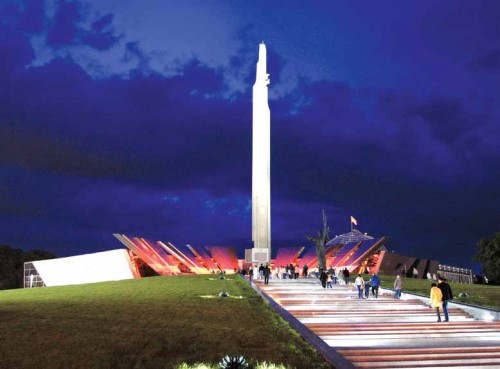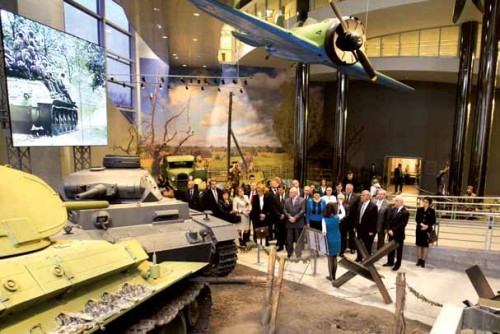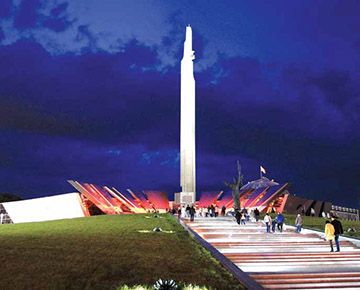
Great Patriotic War History Museum’s new building
Yelena and Alexander have come to Minsk from Moscow, deciding to spend several hours of their visit at the museum. They visited the National Library some years ago and were determined to now tour this city ‘pearl’, being convinced that the Great Patriotic War History Museum would fascinate them in the same way. “We failed to take a virtual tour beforehand, to fully enjoy our visit,” admits Yelena.
Their ten year old son is rushing about, excited by the howitzers, anti-tank hedgehogs, aircraft, tanks, a katyusha and a German train freight wagon. There’s so much weaponry. After reaching the third hall, Yelena sighs with sorrow: their train is departing in two hours, so they can’t hope to see everything. However, she promises to return to the improvised battlefields another time, as these are truly intriguing.
Anna Galinskaya, the museum’s Deputy Director for Scientific Work, confirms that the exhibition is attracting an increasing number of visitors: almost 250,000 from July-mid December, 2014. Pleasingly, many are individual tourists, rather than being part of organised groups. They follow the call of their souls. As Ms. Galinskaya notes, it’s hard to calculate exactly how many visitors come daily but up to 40 excursion groups might visit, each comprising up to 25 people.
On entering the hall entitled ‘Radical Turn: Soviet Rearguard’, we notice a middle aged man attentively studying the photos. Nikolay has come from Smolensk to seek out a photo of his uncle, who fought for his Motherland in Novorossiysk but failed to return home. Nikolay explains that he is attempting to make a discovery; as a child, he often heard that the photo might exist in a museum but he is yet to find it in Moscow, so is relying on Minsk’s exhibition.
The hall devoted to Belarus’ liberation is noisy, as an orgaised group of foreigners (mostly French) are demonstrating special interest in facts relating to Europe’s liberation. Visitors to the museum arrive from all over the globe so it’s impossible to say for sure which nationalities dominate: they come from Italy, Spain, France, China and, even, Vietnam.

Updated museum exhibition attracts crowds
Of course, many hail from Russia and Germany. The museum hears words of gratitude not only from ordinary visitors but from top ranking officials: Vladimir Putin was among the first to sign the VIP visitors’ book, followed by Dmitry Medvedev, Gennady Zyuganov and Turkmen President Gurbanguly Berdymukhammedov.
Winter holidays have brought another surprise and, as Ms. Galinskaya admits, the museum has acquired new life, with a great many children visiting, filling the spacious halls with their voices, energy and curiosity. Pleasingly, their interest can be fully satisfied, as the museum’s 4,200 square metres demonstrate 8,000 exhibits (of 144,000 in the archive). The figure is not as great as it might be but even these exhibits are enough to tell the truth about the War.
By Yelena Misnikova











